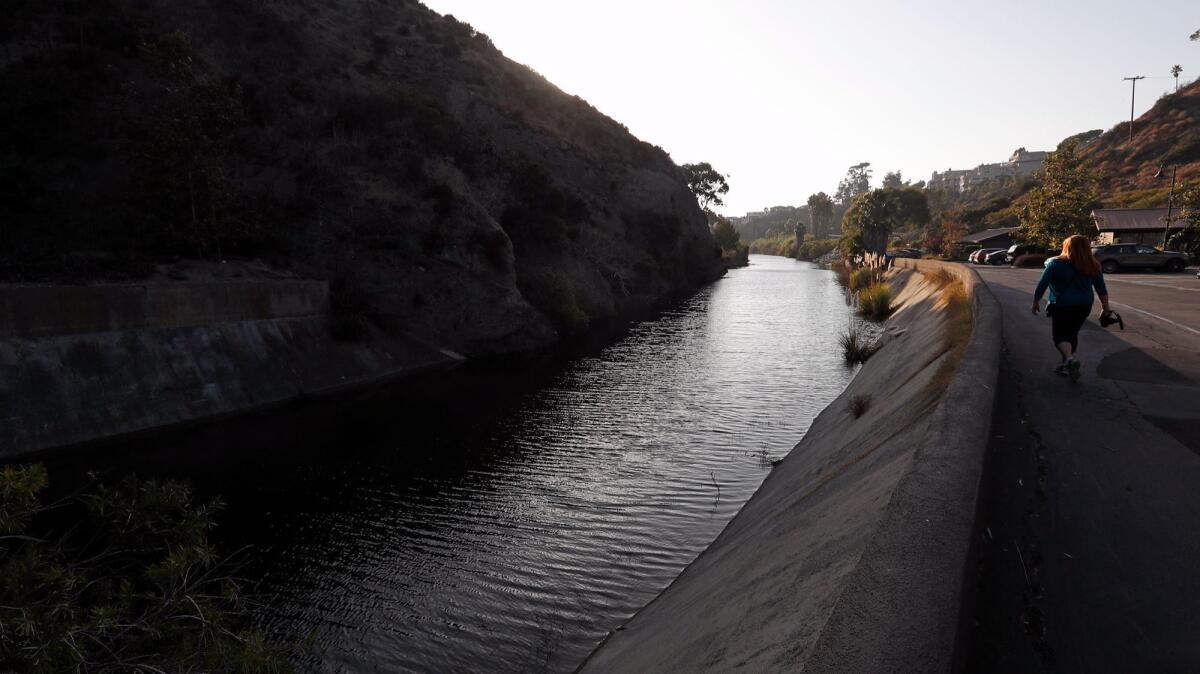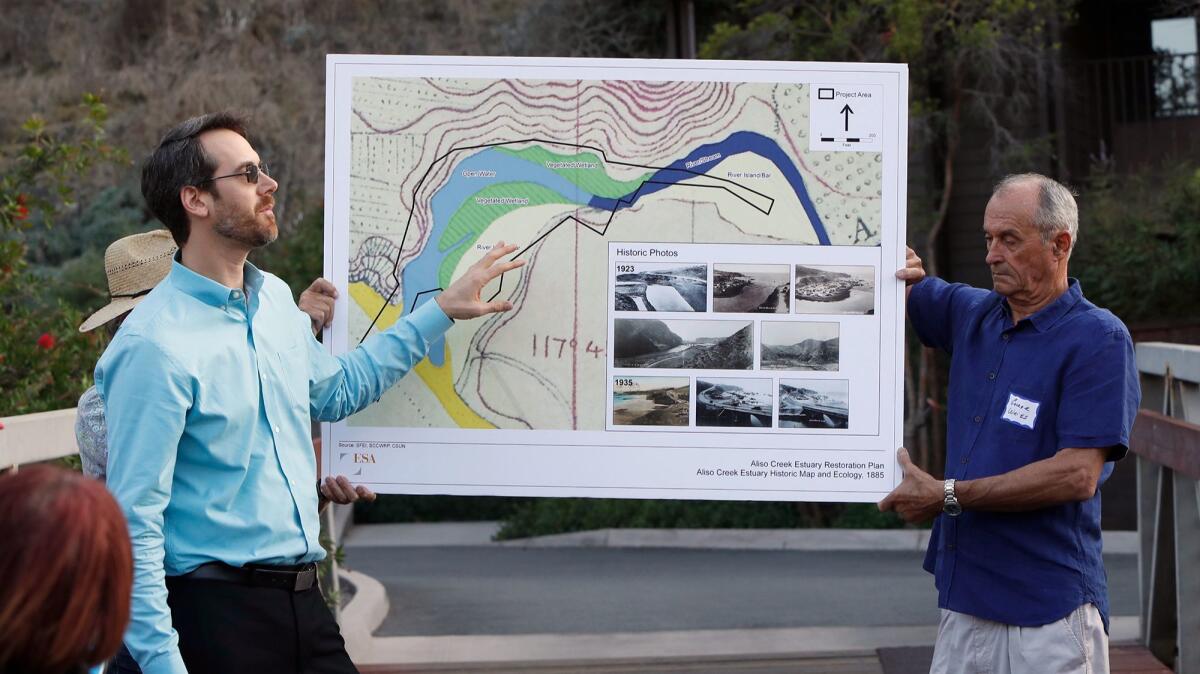Aliso Creek estuary once had 14 acres of wetlands; now, there’s a plan to restore some of them

It’s no secret that the Aliso Creek estuary in Laguna Beach has and continues to suffer from the impact of urban development.
The creek and estuary are part of a 35-mile watershed that begins in the Santa Ana Mountains and flows to the ocean at Aliso Beach Park, taking urban runoff that can include fertilizers and pesticides from inland cities with it all the way to the ocean.
For the record:
4:40 p.m. Oct. 13, 2017An earlier version of this article stated that the foundation hopes to restore a 6-acre area. In fact, it hopes to restore an 11-acre area. The earlier version also stated that the project team spoke with county officials about the restoration; they spoke with water district officials.
But the nonprofit Laguna Ocean Foundation, in partnership with the California Coastal Conservancy, developed a plan to fight back and restore the estuary to a semblance of its former glory.
The conceptual plan, which the conservancy helped fund with a $300,000 grant, was unveiled to the public Thursday during an estuary tour and subsequent presentation at The Ranch at Laguna Beach, which operates a hotel and golf course within Aliso Canyon.
The foundation hopes to enhance water quality and restore a 11-acre area into a vibrant habitat for plants and animals such as the tidewater goby fish and Western pond turtle.
The Laguna Beach City Council officially endorsed the project in 2015. The foundation then hired scientists with expertise in estuary restoration.
Knowledge of the area’s history played an important role in the plan’s development, Nick Garrity, a hydrologist and civil engineer with the environmental planning firm ESA, told a group of about 20 people who stood on a bridge while the creek gently flowed underneath.
In the 1880s, there were 14 acres of native vegetated wetlands on north and south banks within the estuary, Garrity said amid a backdrop of canyon hillsides partially cloaked in the late-afternoon autumn sun.

Garrity and the project team studied historical maps to learn of the area’s past conditions.
As housing tracts sprouted in communities farther up the watershed, greater volumes of urban runoff entered the creek. Water now constantly flows through the estuary, at 1 cubic foot per second, even during the dry season, Garrity said.
Through the years, the wetlands’ banks were altered, concrete channels were built and the wetlands disappeared to where “virtually none” currently exist, Garrity said.
To boost the estuary’s water quality, there could be a way to capture some of the dry-season urban runoff by diverting it to the South Coast Water District treatment system, which would convert the runoff into recycled water, Garrity said.
Healthy estuaries provide a natural filtration system for water entering the ocean, according to a Laguna Ocean Foundation brochure. Thus a restored estuary would yield a cleaner and clearer ocean.
The project team has spoken with water district officials about a possible purchase of a parking lot on the eastern side of South Coast Highway from Aliso Beach Park that could be transformed into wetlands, Garrity said, eliciting applause from the group.
The project has caught the attention of state Sen. Pat Bates (R-Laguna Niguel) and county supervisor Lisa Bartlett, whose fifth district includes Laguna Beach. Both women spoke Thursday in support of the restoration.
“There is bipartisan concern about oceans and health,” Bates said. “It is a positive step when there is concern because money goes to studies. This project is a step in the right direction.”
Experts said Aliso Creek could be a model in how to restore estuaries of its size and offer opportunities for public education.

“It’s not only a biological resource, but a scenic resource,” Ed Almanza, the foundation’s project manager, said. “Views are really striking along the shore.”
Garrity did not provide an estimated cost for the next phase, which includes environmental review, obtaining permits from federal and/or state agencies, and design.
In the coming months the foundation will draft a report with technical data that the public will have an opportunity to review.
Twitter: @AldertonBryce
More to Read
Start your day right
Sign up for Essential California for news, features and recommendations from the L.A. Times and beyond in your inbox six days a week.
You may occasionally receive promotional content from the Los Angeles Times.






